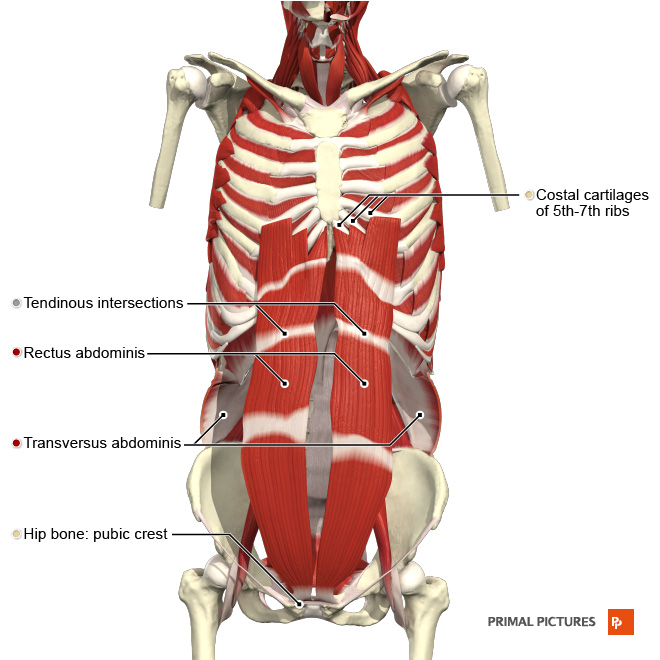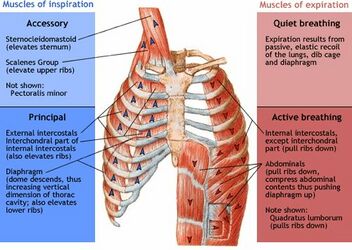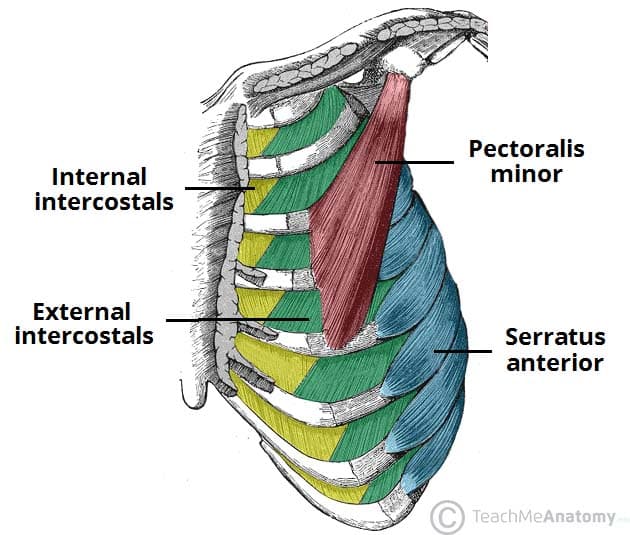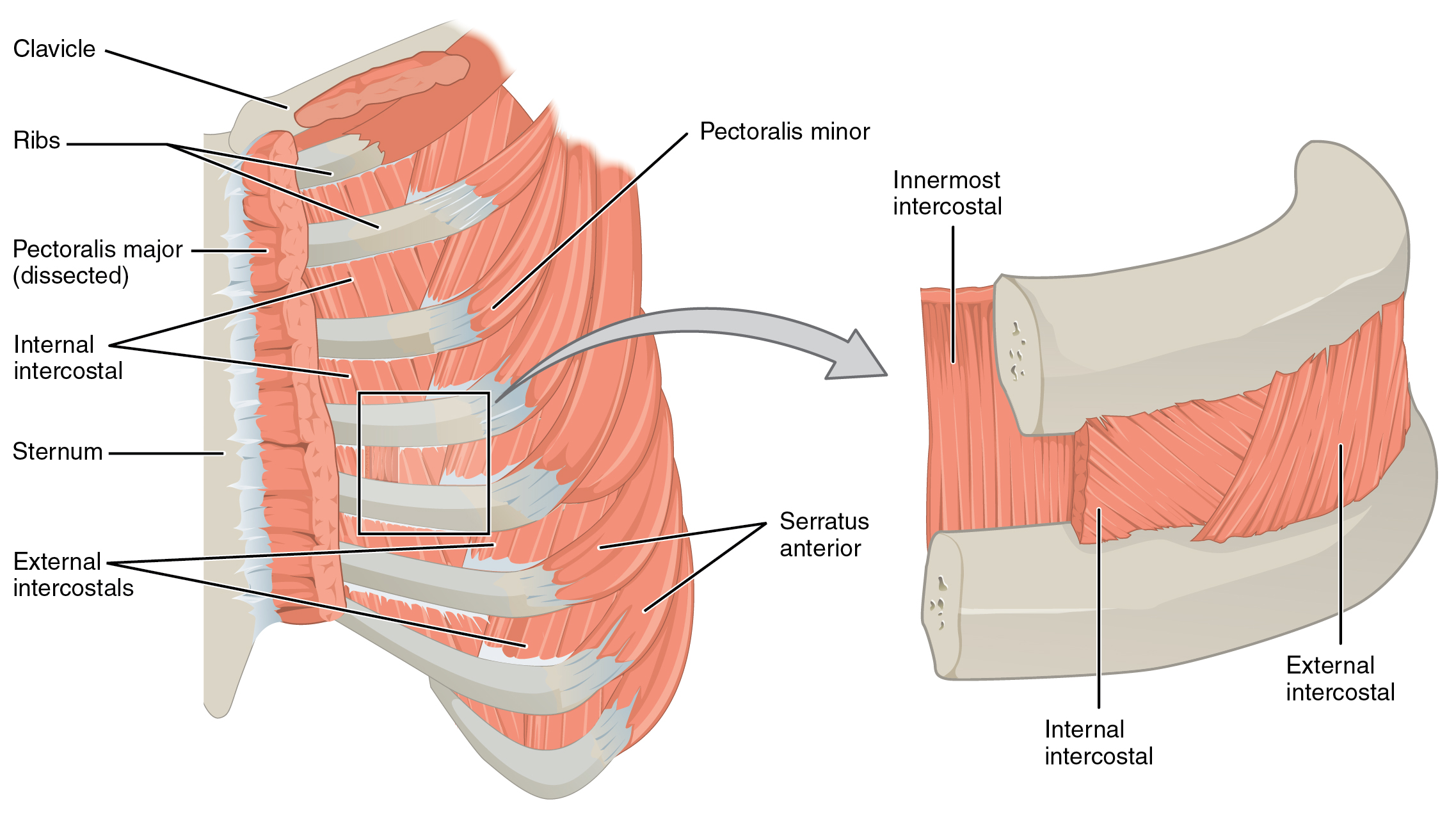Deep Muscles of the Thorax Promote Movements for Breathing
Thirteen reflective markers were placed on the upper the clavicles 3rd ribs and sternal angle and lower thorax the 8th ribs 10th ribs and xiphoid process and the abdomen upper abdomen and. The diaphragm is important as it separates the thoracic cavity from the abdominal cavity and therefore requires 3 openings that act as channels for.

Muscles Of Respiration Physiopedia
Diaphragmatic breathing is a type of breathing exercise that helps strengthen your diaphragm an important muscle that helps you breathe as it represents 80 of breathing.

. This exercise will help maintain the normal movement of your chest making it easier for your lungs to expand. More than 90 of sick people have upper chest breathing with increased minute ventilation respiratory rates and minute volume ie automatic deep breathing at rest or taking too much air per one breath. Two phases of breathing.
This breathing exercise is also sometimes called belly breathing or abdominal breathing. Note that the perineum is the diamond-shaped area defined by these four landmarks. Diaphragm most important muscle of respiration Location.
Colloquially we call this the diaphragm. Thoracic breathing causes three fundamental health effects that promote chronic diseases and lead to low body-oxygen levels. Public symphysis coccyx ischial tuberosities.
Muscles of the thorax for breathing and the pelvic floor the diaphragm We have 3 layers of muscles that prevent the organs from falling down. These muscles are found around the shoulders neck and upper chest. Which of the following is not a muscle primarily invoved in the breathing process A.
Breathing movements were measured with a 3-dimensional motion system during quiet and deep breathing with subjects in supine and sitting positions. TF Although all skeletal muscles have different shapes the fascicle arrangement of each muscle is exactly the same. Then relax your arms out to each side with palms faced upwards.
TF Deep muscles of the thorax promote movements for breathing. Prime mover of inspiration. Deep Breathing Exercise Deep breathing is combining pursed lip breathing and diaphragmatic breathing.
With the help of the muscles attached to the hyoid bone. The deep muscles of the thorax that promote inhaling are known as the diaphragm muscles. Muscles that helpful in expanding the thoracic cavity are called the inspiratory muscles because they help in inhalation.
Deep chest breathing requires two yoga blocks. You need to sit on the floor and place the blocks behind you one in a flat position and the other at the medium position. Continue these deep-breathing exercises indefinitely.
Up to 24 cash back Table 105. The major head flexors are the sternocleidomastoid muscles with the help of the muscles attached tot he hyoid bone. Flattens on contraction increasing volume in the thoracic cavity.
The muscles of the thorax include both the diaphragm as well as the muscles of the thoracic cage. The arrangement of a muscles fascicles determines its range of motion and power. This basic movement causes breathing muscles such as the diaphragm deep abdominal muscles and the pelvic floor muscles to contract which is a direct demonstration of how they are partly responsible for spinal stability itself.
All muscles that are attached to the human rib cage have the inherent potential to cause a breathing action. The frontal belly of the epicranius. Contraction of these muscles enlarges rib cage Diaphragm divides thoracic and abdominal cavities.
The diaphragm can be located below the lungs and consists of a sheet of skeletal muscle which displays a double-domed structure. This overcompensation of the chest movement causes what we call stress-based breathing because it is a direct. The diaphragm is a large sheet of muscle that separates your thoracic cavity or the upper half of your trunk which contains your heart lungs and ribs from your abdominal cavity - the lower half of your trunk which contains your organs and intestines.
Deep muscles of the thorax promote movements for breathing. TF The muscles of facial expression insert into skin or other muscles not bones. Deep Chest Breathing.
The accessory muscles used when breathing in -- called accessory muscles of inspiration -- include the scalene sternocleidomastoid trapezius and pectoralis major muscles. You need to lay your shoulder blades on the flat block and your head on the other. Forms partition between thoracic abdominopelvic cavities.
Instructions Utilize one or more of the following exercises in class wide small group or individual settings. Deep muscles of the thorax promote movements for breathing. Those that compress the thoracic cavity are called expiratory muscles and they induce exhalation.
Expiration brought on by relaxation of inspiratory muscles as. Most superficial thorax muscles are extrinsic shoulder muscles. Next you need to.
Perform this exercise 5-6 times a day. Inspiratory muscles peaceful breathing. Deep Muscles of the Thorax.
The biggest muscle involved in breathing is the diaphragm. Deep Breathing and Mindful Movements Activity 5-8 5-15 minutes Purpose To teach and practice self-regulation skills. On top of deep transverse abdominis lies the internal oblique layered with external oblique and rectus abdominis on top on the left side.
These are the muscles that are activated when a person has good posture and takes a deep breath. Inspiration inhaling and expiration exhaling Inspiratory muscles include diaphragm and external intercostals. When they contract the accessory muscles of inspiration lift up the breastbone upper ribs and collarbones.
The deep muscles of the thorax that promote inhaling are known as the diaphragm muscles. Take 5-6 deep breathes each session. These are the muscles that are activated when a.
When we exhale and the diaphragm lifts the belly naturally falls. Sternocleidomastoid scalene muscles serratus anterior pectoralis major pectoralis minor trapezius latissimus dorsi erector spinae iliocostalis lumborum quadratus lumborum. To feel the transverse muscle first lie on your back and breath place your hands on your belly and feel the belly rise and fall with the breath.
Accesory inspiratory muscles used in respiratory distress. The deltoid is a prime mover of the arm that acts in adduction.

Muscles Of Respiration Physiopedia

Muscles Of The Thorax Teachmeanatomy

Axial Muscles Of The Abdominal Wall And Thorax Anatomy And Physiology
Comments
Post a Comment